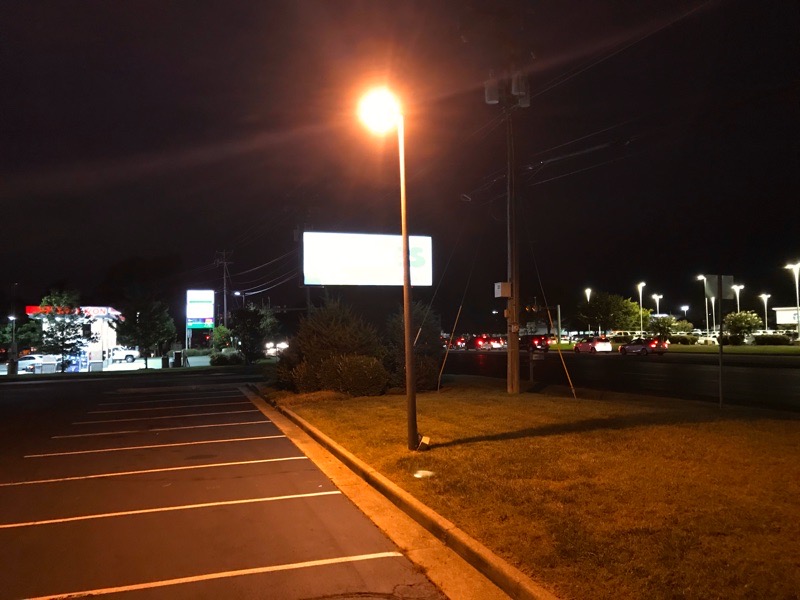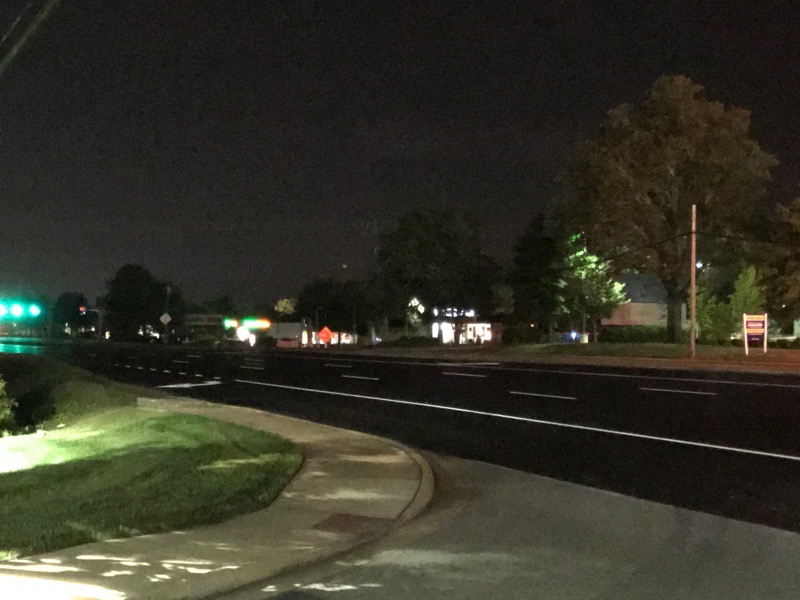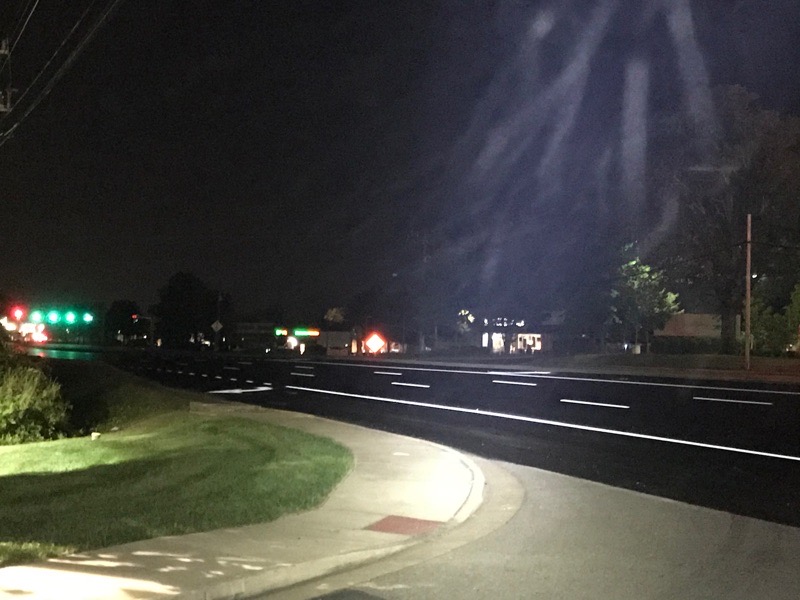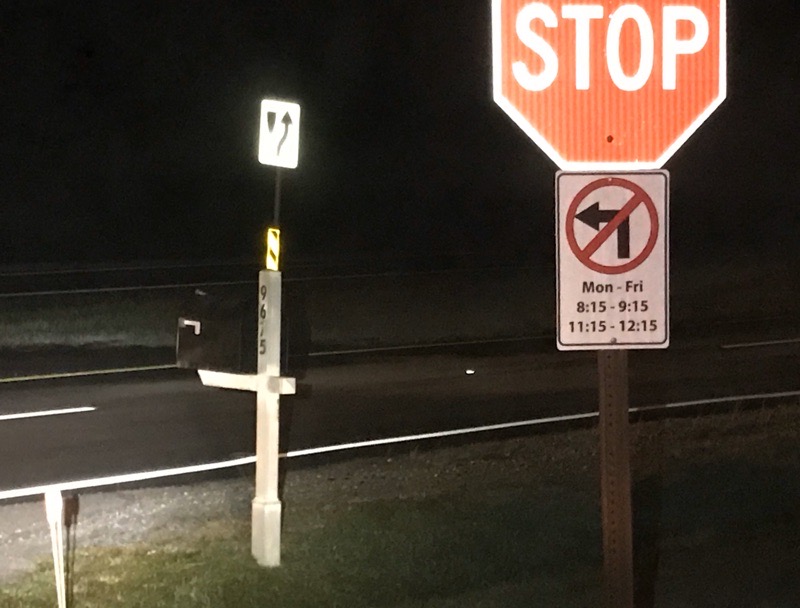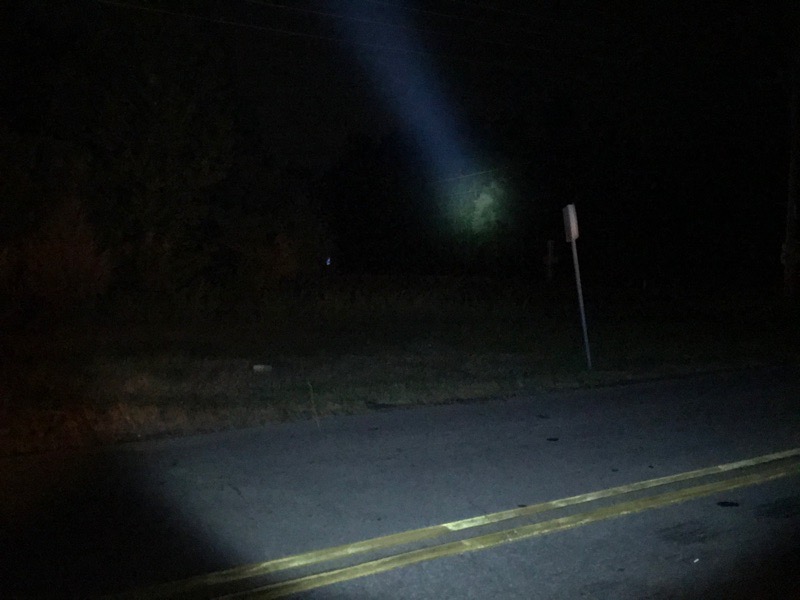Glad the photos work for you mr pond.
Yeah, that contrast of tint was a great thing to see Jean-Luc.
Last night the Bones got the most use. Sometimes to look for eyes in the distance while taking a nature call break. Other times just to see the pavement exposed after the asphalt eater had done its thing and sweepers had cleaned off the leftover crumbs. I have to decide if what they left needs a trim or if pavement remaining needs re-enforcement. The triple beam of the Bones meant I could see potential problems at a distance by the hot spot, the middle beam shows me things up close without being too bright and the broad spill keeps me from getting run over.
Tonight we move back to a place where the top surface of pavement was removed to cover it up with an experimental asphalt mix. Being the mixture is an experiment means lots of bosses will be around. If all goes well lots of office dwellers will be patting each other on the back. If not "who was the inspector?" will be the topic of discussion in their offices tomorrow. Luckily this time I'm low guy on the totum pole.
My daily supervisor is a young, up and comer so he will be facing a big test tonight. He will be interviewed by folks with PhD's, carrying clip boards and cameras. Part of me misses all that attention as I've been in his shoes a dozen times. Part of me thinks 'better you than me kid's and part of me thinks "which flashlight will be best tonight?" I'll focus on the third option. In the meantime I will present my kid boss an NIP Energizer hardcase so he won't embarass himself by trying to light an area with a celphone that some PhD wants to see
Yeah, that contrast of tint was a great thing to see Jean-Luc.
Last night the Bones got the most use. Sometimes to look for eyes in the distance while taking a nature call break. Other times just to see the pavement exposed after the asphalt eater had done its thing and sweepers had cleaned off the leftover crumbs. I have to decide if what they left needs a trim or if pavement remaining needs re-enforcement. The triple beam of the Bones meant I could see potential problems at a distance by the hot spot, the middle beam shows me things up close without being too bright and the broad spill keeps me from getting run over.
Tonight we move back to a place where the top surface of pavement was removed to cover it up with an experimental asphalt mix. Being the mixture is an experiment means lots of bosses will be around. If all goes well lots of office dwellers will be patting each other on the back. If not "who was the inspector?" will be the topic of discussion in their offices tomorrow. Luckily this time I'm low guy on the totum pole.
My daily supervisor is a young, up and comer so he will be facing a big test tonight. He will be interviewed by folks with PhD's, carrying clip boards and cameras. Part of me misses all that attention as I've been in his shoes a dozen times. Part of me thinks 'better you than me kid's and part of me thinks "which flashlight will be best tonight?" I'll focus on the third option. In the meantime I will present my kid boss an NIP Energizer hardcase so he won't embarass himself by trying to light an area with a celphone that some PhD wants to see
Last edited:




